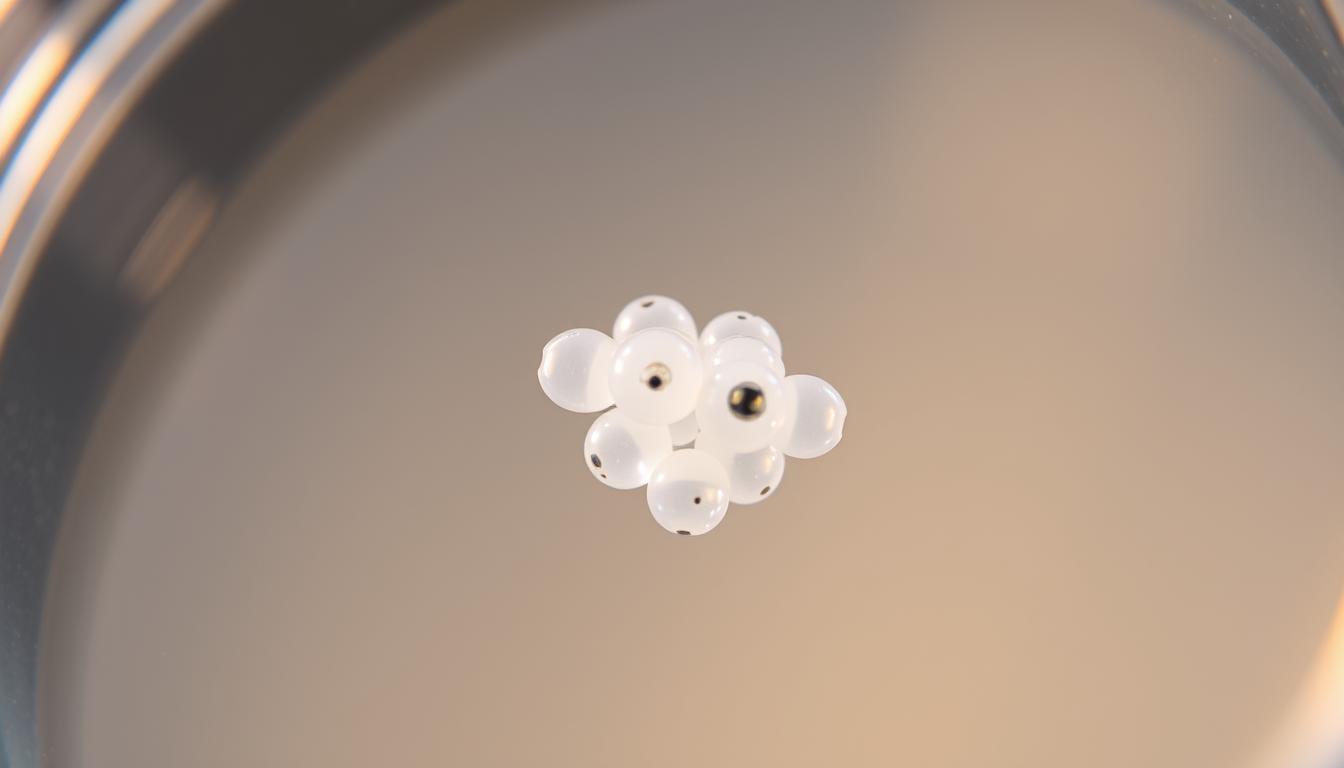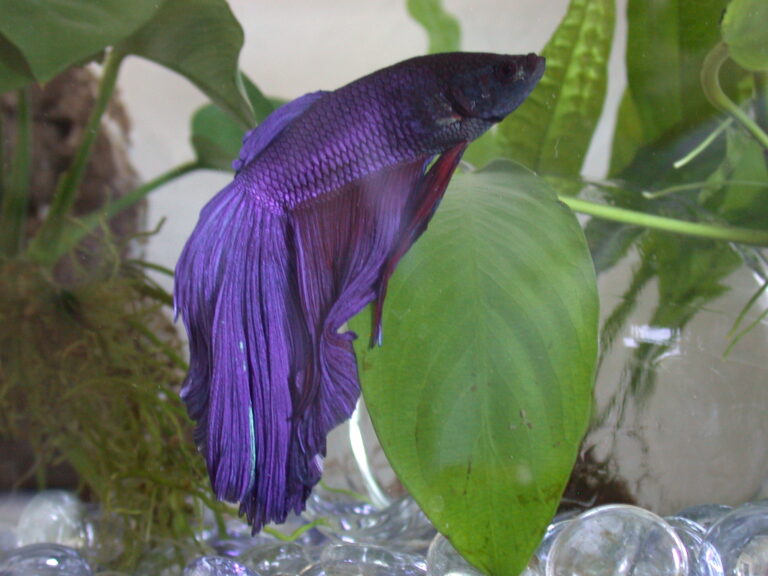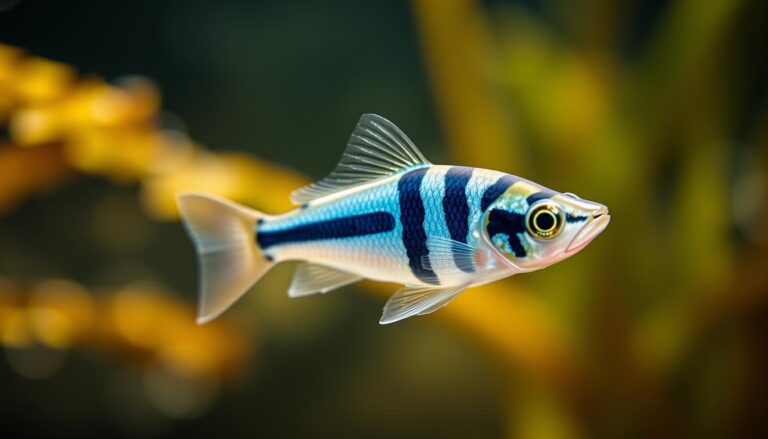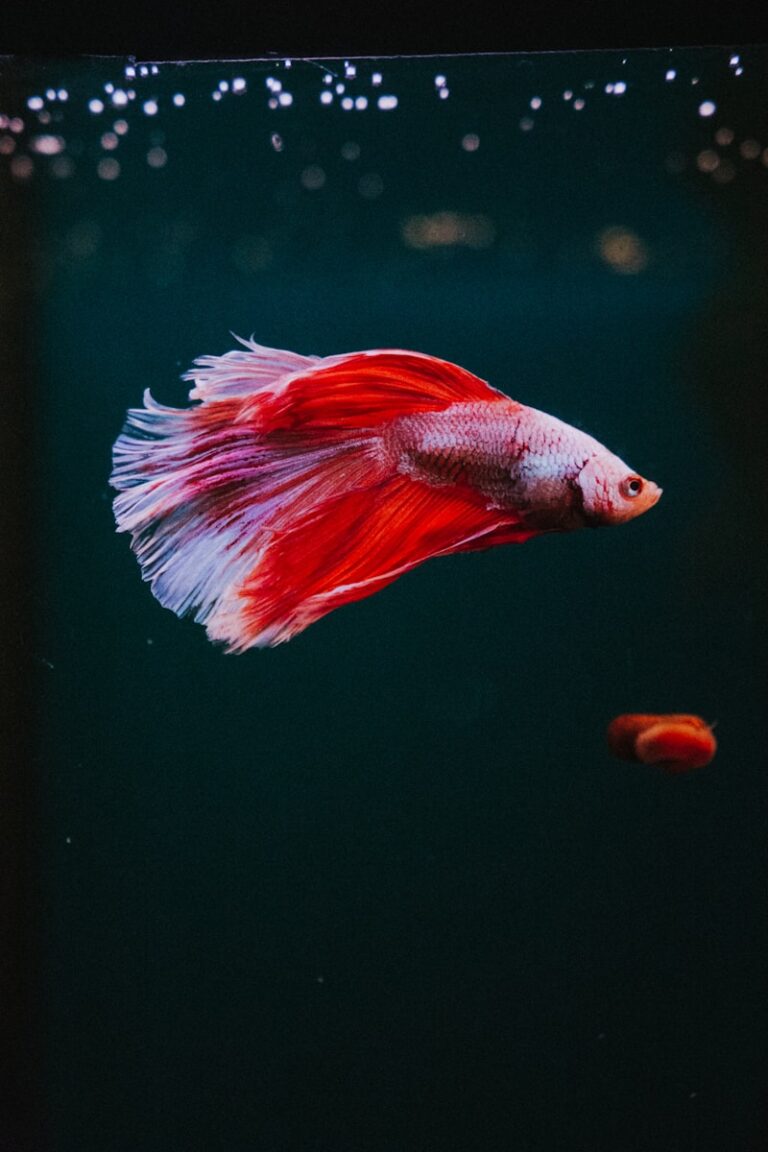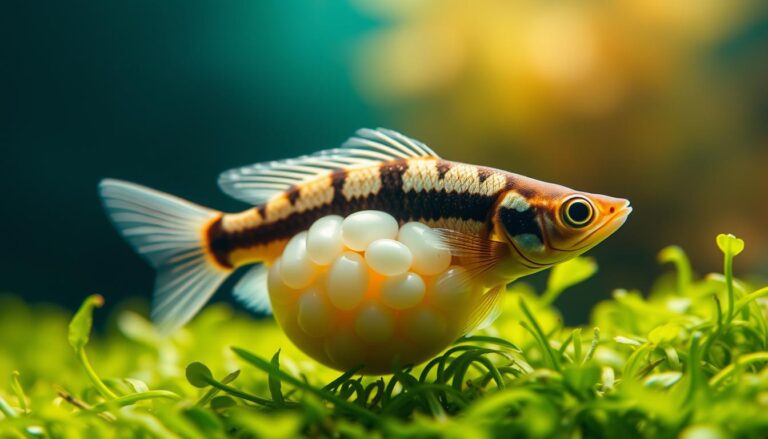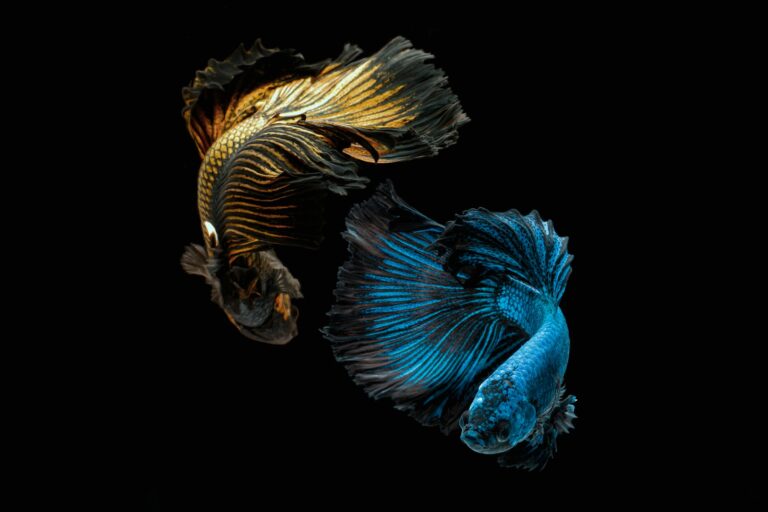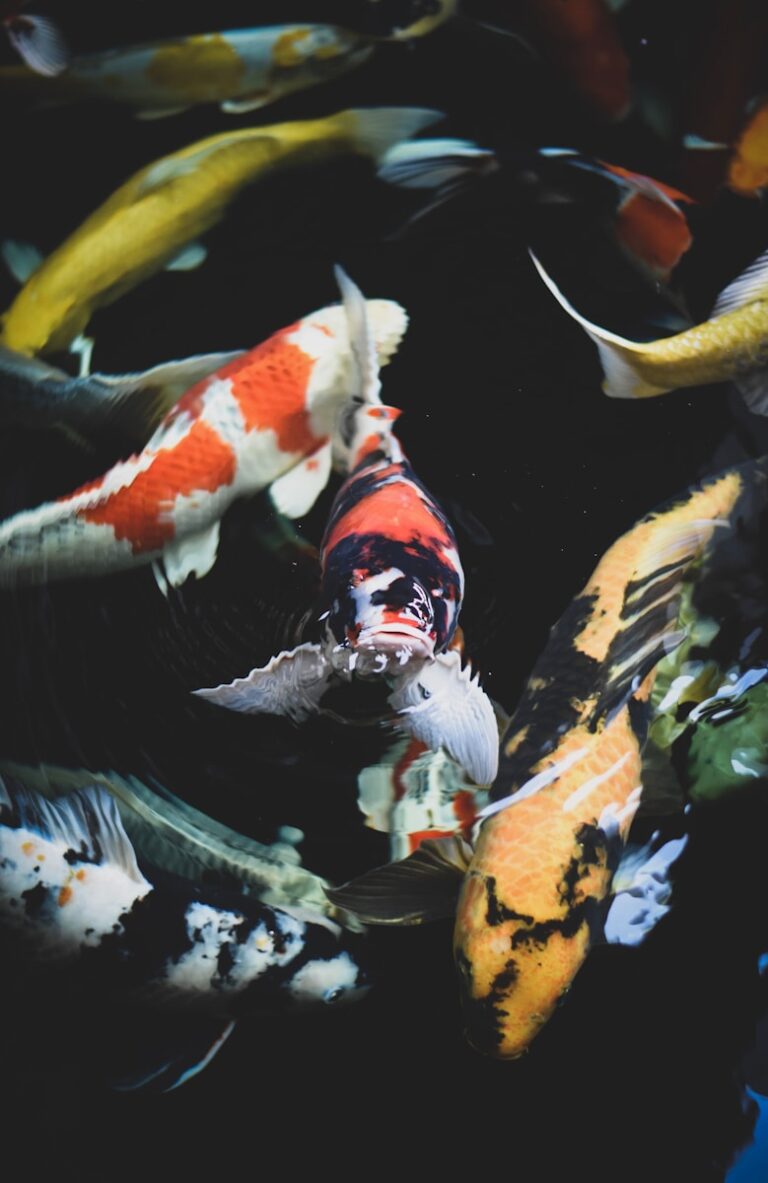Zebra Danio Breeding: 1st Comprehensive Guide
This guide will walk you through everything from setting up your tank to raising the fry. You’ll learn how to zebra danio breeding is with ease and confidence.
Did you know a single pair of zebra danios can lay over 100 eggs in one spawning session? This zebra danio reproduction is a big reason why they’re popular among aquarium fans. Their striking black-and-white stripes make them stand out. Plus, they’re very hardy and can live in many different water conditions, perfect for beginners.
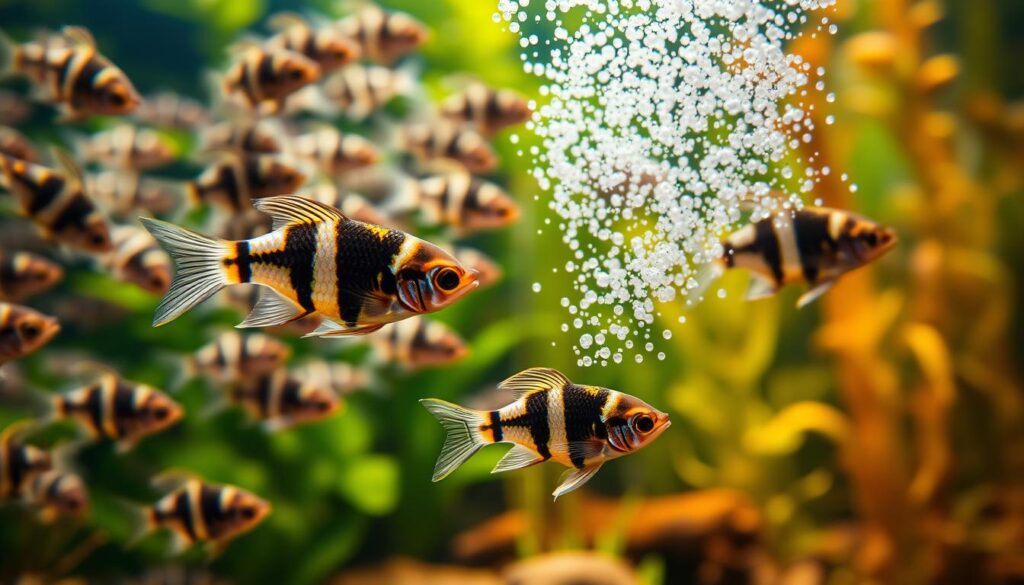
Table of Contents
Key Takeaways
- Learn how to create the perfect breeding environment with this breeding guide for zebra danios.
- Discover why zebra danios are a beginner-friendly species for home aquarium setups.
- Understand water parameters, spawning triggers, and fry care essentials.
- Get tips to prevent common issues like egg-eating behaviors.
- Follow step-by-step methods to ensure successful zebra danio reproduction cycles.
Understanding Zebra Danios: Species Profile and Breeding Potential
To succeed in zebra danio breeding, you must understand their biology and natural traits. These small, colorful fish love warm, slow-moving waters of South Asia. Creating a habitat similar to their wild home can help with breeding.
Natural Habitat and Behavior
Zebra danios come from India, Pakistan, and Bangladesh. They live in rivers, ponds, and flooded fields. In your tank, keep them in groups of 6-8 to reduce stress and encourage breeding.
Feed them a variety of foods, like insects and algae, to keep them healthy. This diet is similar to what they eat in the wild.
Identifying Male and Female Zebra Danios
Sexual dimorphism is important for breeding zebra danios. Here’s how to tell males from females:
| Trait | Male | Female |
|---|---|---|
| Body Shape | Slender, streamlined | Rounded belly, when egg-laden |
| Color | Brighter stripes, more active | Paler stripes, less flashy |
Watch their behavior too. Males chase females during courtship. Use a magnifying glass to check their body shape closely.
Sexual Maturity Timeline
Zebra danios become sexually mature at 3–4 months. Females show fuller bodies at this time. Watch their growth to plan breeding setups correctly.
Early signs of maturity include males showing brighter colors. Remember, patience is key. Rushing breeding can stress them out and lead to failed spawns.
“Patience is key—rushing breeding before maturity leads to stress and failed spawns.”
Learning these basics will prepare you for the next steps in zebra danio sexual dimorphism and setting up their environment.
Essential Equipment for Successful Zebra Danio Breeding
A good zebra danio breeding setup needs the right tools. Start with a breeding tank for zebra danios—a 5–10 gallon tank is best. Here’s what you need to gather:
- Tank: A small aquarium is key for watching closely. Choose a 5–10 gallon tank with a tight lid.
- Filter: Use sponge filters (e.g., Marina 303 Sponge Filter) to keep eggs and fry safe from strong currents.
- Heater and Thermometer: Keep the water at 72–80°F with a submersible heater like the Aqueon 25W Heater.
- Spawning Mops: Natural or synthetic mops are great for eggs. Hang them vertically in the tank.
- Breeding Traps: Mesh traps or nets catch fertilized eggs, keeping adults from eating them.
- Lighting: LED lights with adjustable brightness (e.g., Fluval LED+) mimic natural daylight.
| Equipment | Budget Option | Premium Option |
|---|---|---|
| Filtration | Sponge filter | Canister filter with sponge pre-filter |
| Heater | Aqueon 25W | Nuvo ThermoStat |
| Spawning Mop | DIY yarn mop | Marineland Spawning Mop Set |
A breeding tank for zebra danios also needs a separate fry rearing container after eggs hatch. You can use DIY spawning mops or sponge filters for a budget-friendly option. Focus on tools that protect eggs and keep conditions stable. Mixing affordable tools with smart choices helps you set up a successful equipment for breeding danios setup without spending too much.
Setting Up the Perfect Breeding Tank Environment
To ensure successful zebra danio breeding, focus on replicating their natural habitat. This means setting up the breeding tank for danios just right. The right water parameters for zebra danio breeding and substrate choices are key. They help encourage spawning behavior.
Optimal Water Parameters
Keep water temperatures between 78-80°F and pH at 6.8-7.8. Soft to moderately hard water (5-15 dGH) is best for spawning. Always use dechlorinated water and test it often to avoid ammonia spikes. The perfect zebra danio breeding conditions come from balancing these factors.
Substrate Choices for Breeding
- Marbles or mesh substrates prevent adults from eating eggs.
- Fine gravel or sand looks like a natural riverbed but eggs need protection.
Filtration and Water Flow
Use sponge filters with low flow to avoid disturbing eggs. Gentle circulation keeps water moving without harming fry. Place filters away from where fish spawn to reduce current disruption.
Lighting Requirements
Provide 10-12 hours of soft lighting daily. Dimmer settings during spawning may encourage spawning behavior. Avoid harsh direct light to reduce stress.
Conditioning Your Zebra Danios for Breeding Success
To get your zebra danios ready for breeding, focus on their health and environment. A good breeding plan makes sure they’re healthy enough to have strong babies. Here’s how to get them ready.
Nutritional Requirements for Breeding Pairs
Give your zebra danios a diet rich in nutrients for breeding. Feed them live or frozen foods like brine shrimp and bloodworms to improve egg and sperm quality. Feed them 4-5 times a day with high-protein foods.
Adding spirulina flakes or fry foods can help fill any nutritional gaps. Doing this for 1–2 weeks gets them ready to spawn.
- Feed bloodworms 3x weekly to stimulate egg production.
- Include daphnia to boost vitality in males.
- Limit pellets to 2x daily to avoid overfeeding.
Creating the Ideal Pre-Breeding Environment
To get your danios ready for breeding, change their environment. Raise the water temperature to 78–80°F to trigger their spawning instincts. Keep males and females apart for 1–2 weeks to reduce stress.
Use soft, acidic water (pH 6.5–7.0) and dim lighting to encourage natural behaviors.
For more tips on separating fish, check out Chewy’s guide on tank setups. Keep an eye on water quality daily. Make sure ammonia and nitrite levels are close to zero. Being patient is important; sudden changes can delay spawning.
By adjusting their diet and environment, you’ll be ready for successful breeding. These steps help ensure your danios will do well through every part of the breeding process.
The Zebra Danio Breeding Process Explained
Learning about the zebra danio spawning process begins with watching zebra danio mating behavior. Healthy pairs start their activity early in the morning. Males chase females hard, showing they’re ready to spawn. This how zebra danios breed ritual reaches its peak when females lay eggs near plants or spawning mops. Males then fertilize them right away, with females scattering hundreds of eggs in just minutes.
- Adults are introduced into a prepared tank with soft, acidic water.
- Males display bright coloring, nudging females near spawning media.
- Spawning lasts 1–2 hours, with females laying 200–500 eggs total.
- Eggs sink, and adults must be removed immediately to prevent consumption.
“Watch for rapid gill movement in males—it’s a clear sign they’re ready to breed,” says aquatic biologist Dr. Emily Carter.
Successful zebra danio mating behavior means males circle females without hurting them. Aggressive biting is a sign of stress, not courtship. Spawning ends when pairs lose interest, and eggs remain untouched. Timing is key: eggs hatch within 24–36 hours after spawning. Watching for these signs helps ensure eggs make it to the hatching phase.
Egg Collection and Incubation Techniques
After spawning, zebra danio egg care is key for successful hatching zebra danio eggs. These eggs need careful handling to increase their chances of survival.
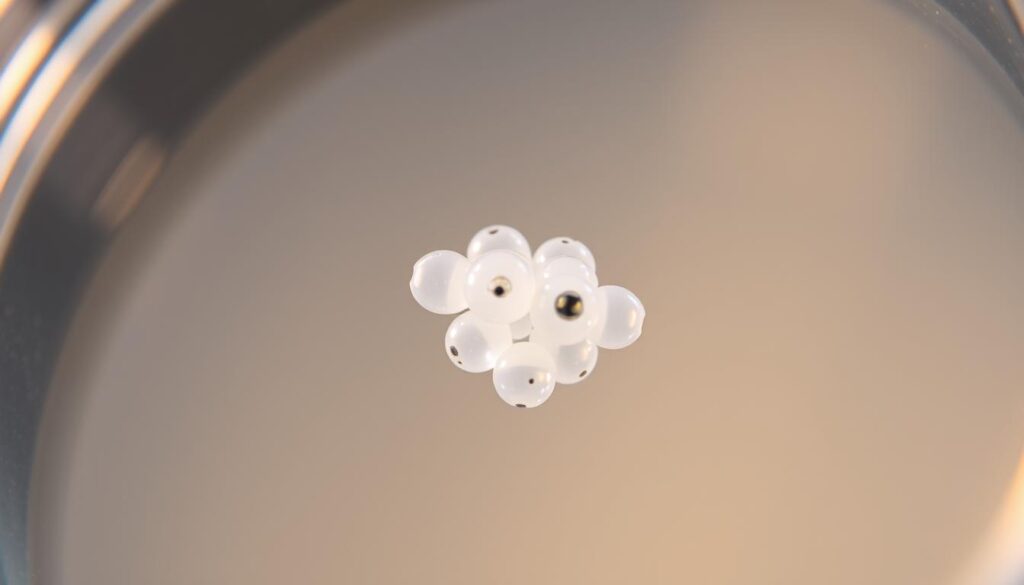
Methods for Protecting Eggs from Adult Fish
Adult fish might eat the eggs. So, it’s important to keep them safe. Here are some ways to do it:
- Spawning mop: A yarn mop in the tank helps eggs get stuck between fibers, making them easier to remove.
- Breeding trap: A divider keeps adults away from eggs after they spawn.
- Mesh-bottom tank: Eggs fall through a mesh into a safe area below.
- Marble substrate: The gaps between marbles hide the eggs from adult fish.
Optimal Incubation Conditions
Keep the eggs in water between 78–80°F. Use gentle aeration to prevent fungus without stressing the eggs. Add anti-fungal agents like methylene blue if fungus shows up. Keep the area dark for the first 24 hours to mimic their natural environment.
Timeline from Egg to Hatching
| Stage | Time Frame |
|---|---|
| Egg deposition | 0–12 hours |
| Eye spots visible | 24 hours |
| First movement | 36 hours |
| Hatching begins | 48–72 hours |
Eggs turning white mean they’ve failed and should be removed to stop fungus. Healthy eggs stay amber-colored until they hatch.
Caring for Zebra Danio Fry: First Weeks of Life
Newly hatched zebra danio fry need careful zebra danio fry care. Their survival depends on good food and a clean environment. Follow these steps for healthy growth and to reduce losses.
First Foods for Newborn Fry
Start with tiny infusoria or commercial fry food. Move to newly hatched brine shrimp at 5-7 days. Feed feeding baby zebra danios 3-4 times a day. Make sure to remove any uneaten food to keep the tank clean.
Growth Milestones to Track
- Days 1-2: Fry absorb yolk sac, becoming free-swimming by day 3.
- Week 1: Begin taking on adult coloration, with faint stripes emerging.
- Week 2: Stripes darken, and fry reach 0.5 inches long.
Watch for any delays to spot health issues.
Common Threats to Fry Survival
Bad water quality stresses and sickens fry. Use a sponge filter and check ammonia levels every day. Lack of nutrients weakens their immune system. Isolate sick fry with cloudy eyes or ragged fins.
A good plan for raising zebra danio fry leads to strong, active fish. Consistent care makes them resilient for years of fun.
Troubleshooting Common Zebra Danio Breeding Challenges
Zebra danio breeding can face problems even with the right setup. We’ll tackle common issues and how to fix them. Often, small changes in care can make a big difference.
No spawning activity? First, check the water temperature. Males need a stable temperature of 75–78°F to show courtship. Stress from too many fish or bad food can also stop spawning. Give them high-protein foods like brine shrimp before trying to mate.
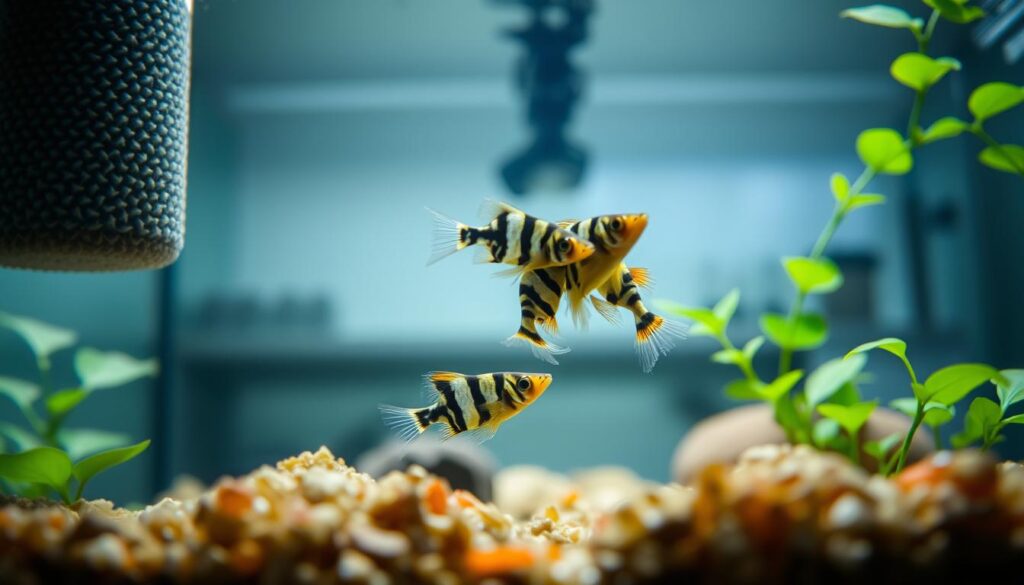
- Fungal eggs or unhatched embryos: Fungus grows in still water. Boost aeration and clean up uneaten food every day. Use methylene blue for infections.
- Parent fish eating eggs/fry: Use spawning mops or marbles for hiding spots. Move adults away once eggs are laid.
- High fry mortality: Make sure live food like infusoria is ready right after hatching. Don’t overfeed to avoid water pollution.
“Unsuccessful zebra danio breeding is often a learning curve. Track each attempt—note tank conditions, diet changes, and behavior—to spot patterns,” advise aquarium experts.
Keep a journal for water tests, feeding, and breeding attempts. Small tweaks can lead to success. Remember, keep trying and watch closely to overcome these hurdles.
Conclusion: Enjoying the Rewards of Successful Zebra Danio Breeding
Successful zebra danio breeding brings joy to aquarists. Seeing eggs turn into active fry is amazing. It turns your tank into a lively ecosystem.
This journey teaches you about water quality, nutrition, and habitat needs. Raising healthy fish not only grows your aquarium. It also lets you share with others or try more species.
Zebra danios are great for beginners because they adapt well. Learning to care for eggs and adjust water is useful for many fish. Keeping water clean and separating fry from adults is key to success.
Even beginners can get great results with this guide. Being patient and paying attention to details like spawning triggers is important. It leads to schools of colorful, striped fish. Whether for fun or to share, breeding zebra danios opens up a world of aquatic life.
Are you ready to start? Every breeder’s journey begins with one attempt. Yours could be next!
FAQ
What are the ideal tank conditions for breeding zebra danios?
For breeding zebra danios, keep the tank at 78-80°F. The pH should be 6.8-7.8. Also, the water flow should be gentle. A clean tank is key for successful breeding.
How can I tell the difference between male and female zebra danios?
Males are slimmer and show brighter colors, more so when breeding. Females are rounder, even more so when they’re carrying eggs. Knowing these differences helps in breeding.
What should I feed my zebra danios to prepare them for breeding?
Feed them a diet rich in protein. Include live and frozen foods like bloodworms, brine shrimp, and daphnia. This diet helps in developing healthy eggs and sperm.
How long does it take for zebra danio eggs to hatch?
Zebra danio eggs hatch in 48-72 hours after fertilization. This depends on the water’s temperature and pH levels.
What do I do if my zebra danios aren’t spawning?
If they’re not spawning, check the water quality and diet. Try separating them and then reintroduce them to encourage breeding.
What mistakes should I avoid when breeding zebra danios?
Avoid poor water quality, overfeeding, and incompatible tank mates. Be patient and follow best practices for breeding.
How can I care for zebra danio fry after they hatch?
Feed the fry infusoria or finely crushed fry food. Keep the water clean and watch their growth for a healthy development.
What are the signs that zebra danios are ready to breed?
Look for increased activity, males chasing females, and females looking fuller with eggs. These signs indicate they’re ready to breed.

